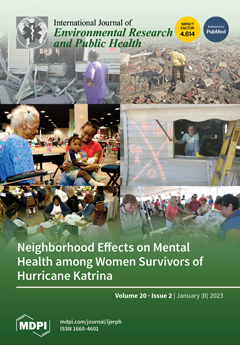In order to explore the treatment effect of a bio–ecological combined process on pollution reduction and carbon abatement of rural domestic wastewater under seasonal changes, the rural area of Lingui District, Guilin City, Guangxi Province, China was selected to construct a combined process
[...] Read more.
In order to explore the treatment effect of a bio–ecological combined process on pollution reduction and carbon abatement of rural domestic wastewater under seasonal changes, the rural area of Lingui District, Guilin City, Guangxi Province, China was selected to construct a combined process of regulating a pond, biological filter, subsurface flow constructed wetland, and ecological purification pond. The influent water, effluent water, and the characteristics of pollutant treatment in each unit were investigated. The results showed that the average removal rates of COD, TN, and NH
3–N in summer were 87.57, 72.18, and 80.98%, respectively, while they were 77.46, 57.52, and 64.48% in winter. There were significant seasonal differences in wastewater treatment results in Guilin. Meanwhile, in view of the low carbon:nitrogen ratio in the influent and the poor decontamination effect, the method of adding additional carbon sources such as sludge fermentation and rice straw is proposed to strengthen resource utilization and achieve carbon reduction and emission reduction. The treatment effect of ecological units, especially constructed wetland units, had a high contribution rate of TN treatment, but it was greatly impacted by seasons. The analysis of the relative abundance of the microbial community at the phylum level in constructed wetlands revealed that Proteobacteria, Acidobacteria, Chloroflexi, Firmicutes, Bacteroidetes, Planctomycetota, and Actinobacteria were the dominant phyla. The relative abundance of microbial communities of Proteobacteria, Chloroflexi, and Acidobacteria decreased to a large extent from summer to winter, while Firmicutes, Bacteroidetes, and Planctomycetota increased to varying degrees. These dominant bacteria played an important role in the degradation of pollutants such as COD, NH
3–N, and TN in wetland systems.
Full article





